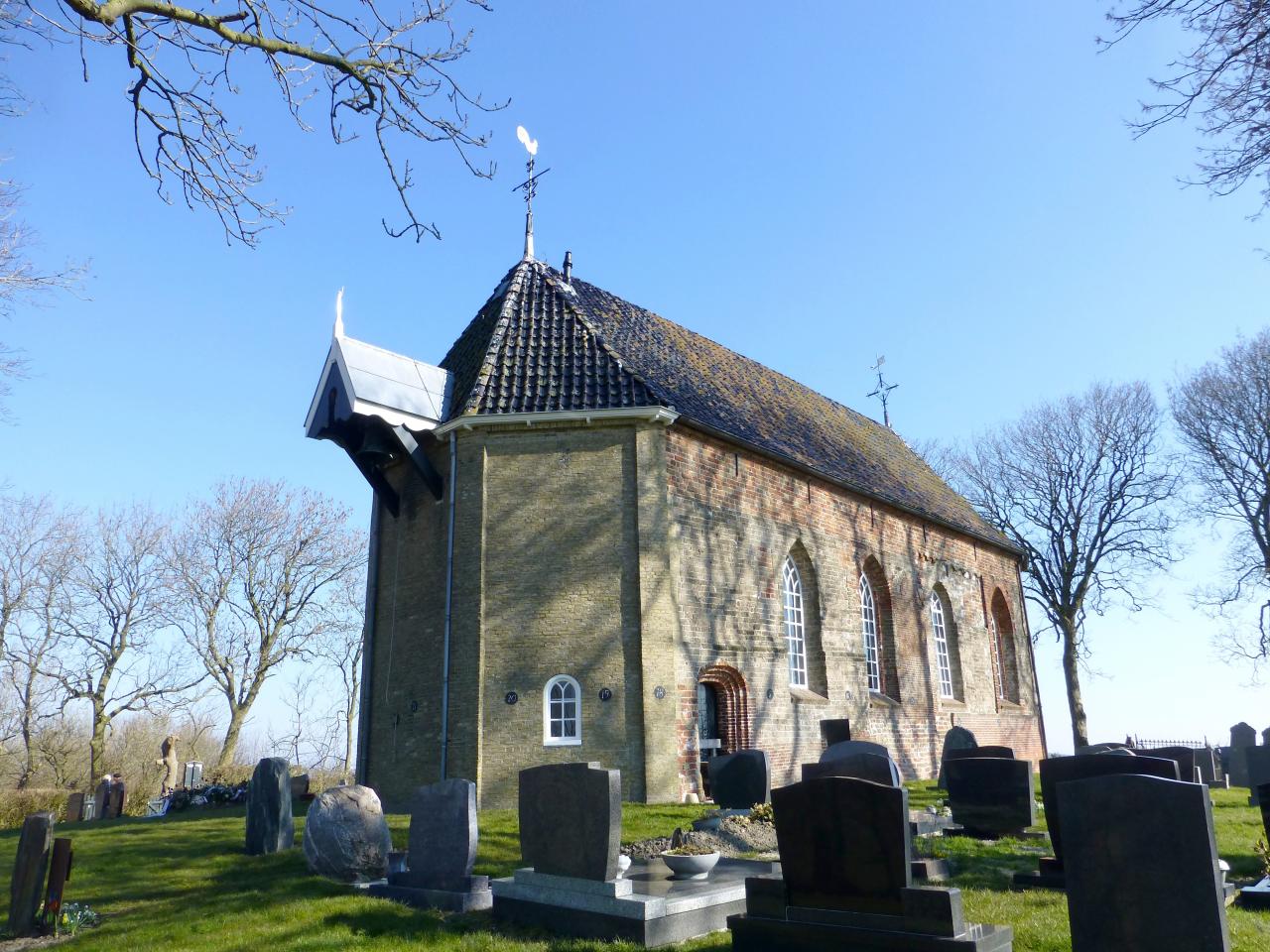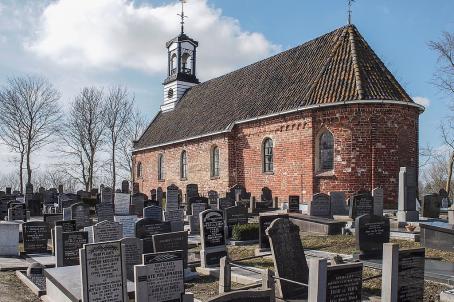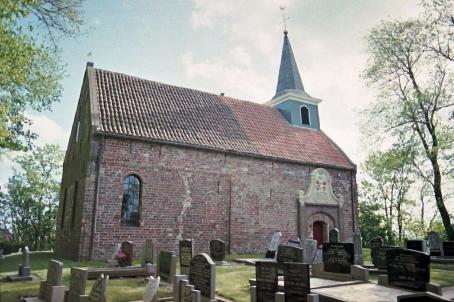St Vitus Church

Just to the north east of Dokkum lies the mound village of Wetsens on the old road towards Metslawier. The mound of Wetsens was once the largest of Frysin. Only a small part of it now remains, with the St. Vitus church on top. The church was taken over on April 8, 2016 by the Alde Fryske Tsjerken Foundation.
About this building
Wetsens is located just outside Dokkum on the old road to Metslawier in the open landscape of northeast Frysin. The Vitus Church was built in the first half of the twelfth century in Romanesque style with tuff stone from the Eiffel. The church was covered with brick in the sixteenth century. Large windows with a pointed arch were broken into the southern wall in the seventeenth century while in the north wall, the old Romanesque windows were closed with bricks in the nineteenth century. During the restoration in 1973 the plaster was removed from the outside wall on the north side and a side chapel was closed. The remains of the side chapel have been preserved behind the wooden bar that has been built on that spot against the north wall. The Vitus church had a tower until 1842. This collapsed the moment the pastor preached about Samson. The tower has not been rebuilt. Instead, the west façade is closed on three sides with yellow stones. This has made the church about four meters shorter. A clock enclosure has been installed on the west façade, with a clock hanging in it.




